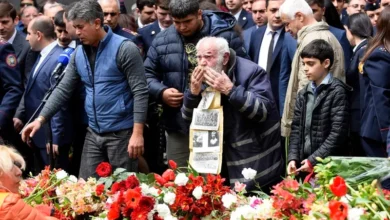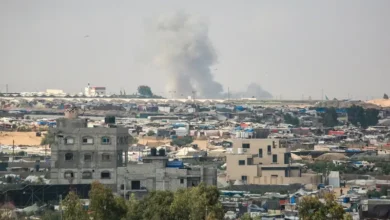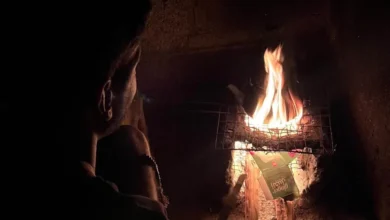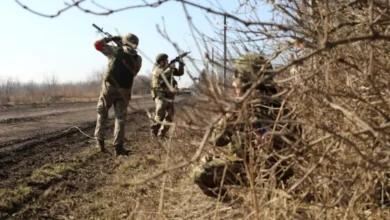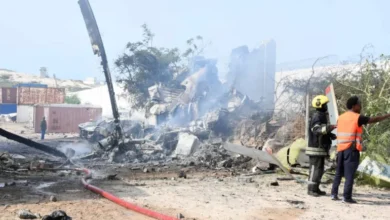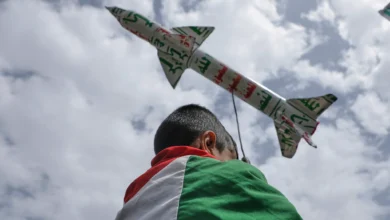‘No running water’: War-displaced Gaza families bathe, wash in polluted sea
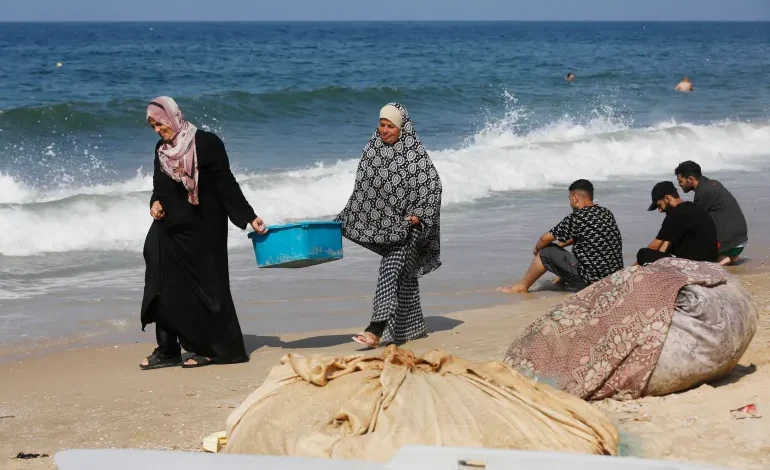
Andaleeb al-Zaq is grateful for the sea and its salty breeze.
“It’s such a welcome change of scenery from the chaos and dirtiness of the school we’ve been staying in,” the 48-year-old said. “The children treat it like we’re on a school trip.”
For Andaleeb, though, the “trip” is a matter of survival.
Her family, a total of 16 members, was displaced from their home in the Shujaiya neighbourhood, east of Gaza City shortly after Israel began bombing the Gaza Strip on October 7.
They headed down south to the central governorate of Deir al-Balah, and made their way to Alif Elementary Boys’ School, run by the United Nations refugee agency.
“All the classrooms were already full with other families, about 80 people per class, so we set up a tent on the school grounds,” Andaleeb said. “There’s 8,000 people taking shelter there.”
The school is close to the Mediterranean Sea, and because of the complete lack of clean running water, it has become a standard practice for some of the families and their children to head there to swim, bathe and wash their clothes.
Israel imposed a total siege on the Gaza Strip more than a month ago, after the October 7 Hamas attacks on Israeli towns and army outposts that killed at least 1,400 Israelis. Some aid has been allowed into the enclave through the Rafah crossing with Egypt in recent days, but Israel continues to bar the entry of fuel. Gaza’s sole desalination plant is out of service due to the lack of fuel.
The coastal strip, which has already been under a 17-year blockade by Egypt and Israel, has been transformed into scenes of staggering destruction. More than 10,300 Palestinians have been killed, the majority of them being women and children. Basic infrastructure has also been targeted. At least 58 percent of all residential units in the strip have been damaged, or 212,000 homes. Without fuel and electricity, hospitals have been working on solar-powered generators.
The United Nations Office for the Coordination of Humanitarian Affairs (OCHA) has recorded that between October 21 and November 1, just 26 trucks carrying vital water and sanitation supplies entered the Gaza Strip, noting that this is nowhere near enough to meet the essential needs for the survival of the 2.3 million-strong population.
“We have no water, no sanitation, no running sewage system,” said Imm Mahmoud, who is staying at the same school. “With this lack of basic hygiene, neither the adults nor the children are comfortable.”
The 52-year-old mother has been displaced for a month and said she has no choice but to wash her family’s clothes in the sea.
But she knows that even the seawater is polluted.
“Children have been suffering from diarrhoea, coughs and colds from the pollution and swimming in the sea,” she said. “But what do you expect them to do? They have to find a way to release their energy. Being cooped up in a school can lead to a lot of yelling and fights with their families.”
‘Environmental and health crisis’
Even before the current war, inadequate sanitation infrastructure and electricity shortages meant that untreated sewage water was dumped into the sea – between 100 to 108 million litres – and was responsible for more than one-quarter of illnesses. It was the primary cause of child morbidity in the Gaza Strip.
According to the Norwegian Refugee Council, the total shutdown of wastewater treatment plants in October has led to the release of more than 130,000 cubic metres of untreated sewage into the Mediterranean Sea daily, posing a grave environmental hazard.
The three major water pipelines in the Gaza Strip are all controlled by Israel. Since October 8, the pipeline from Israel to northern Gaza has remained closed. In the south, Israel reconnected the water supply to Khan Younis on October 15 but turned off the supply two weeks later.
And in the central area of the Gaza Strip, Israeli authorities confirmed their intention to restart water supplies on October 29, but residents say that has not happened, and the water coming in taps is either highly chlorinated or salty.


